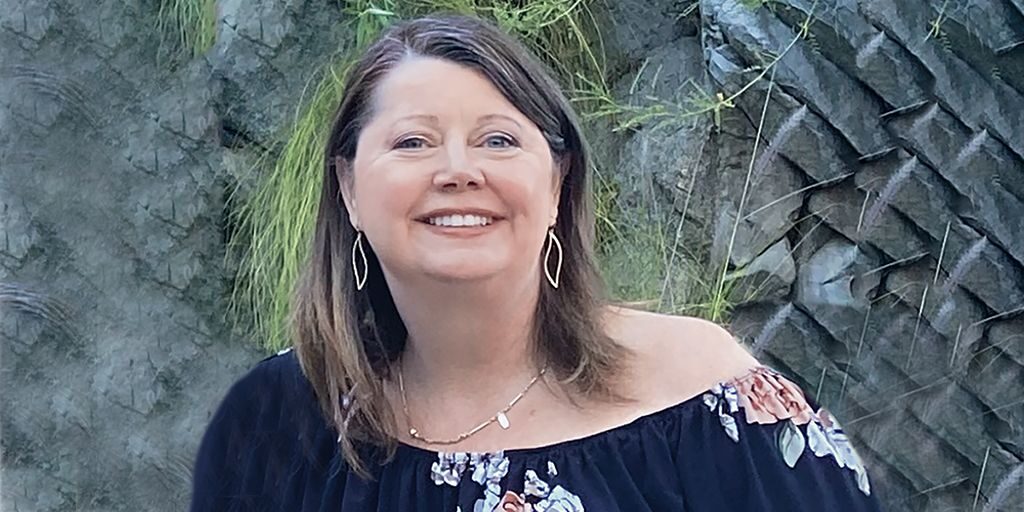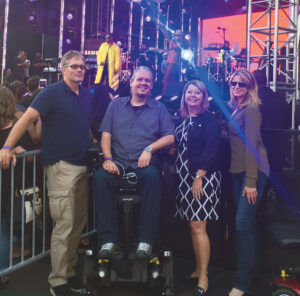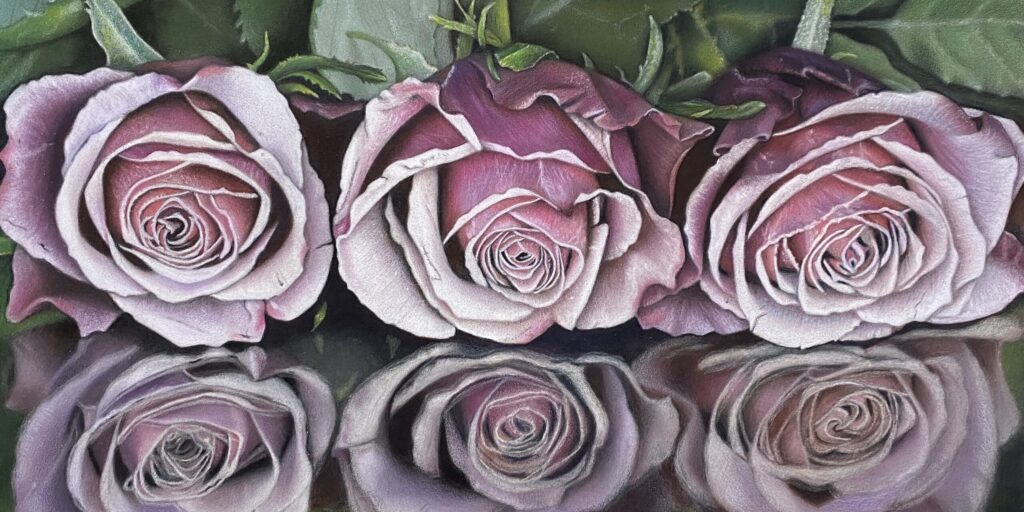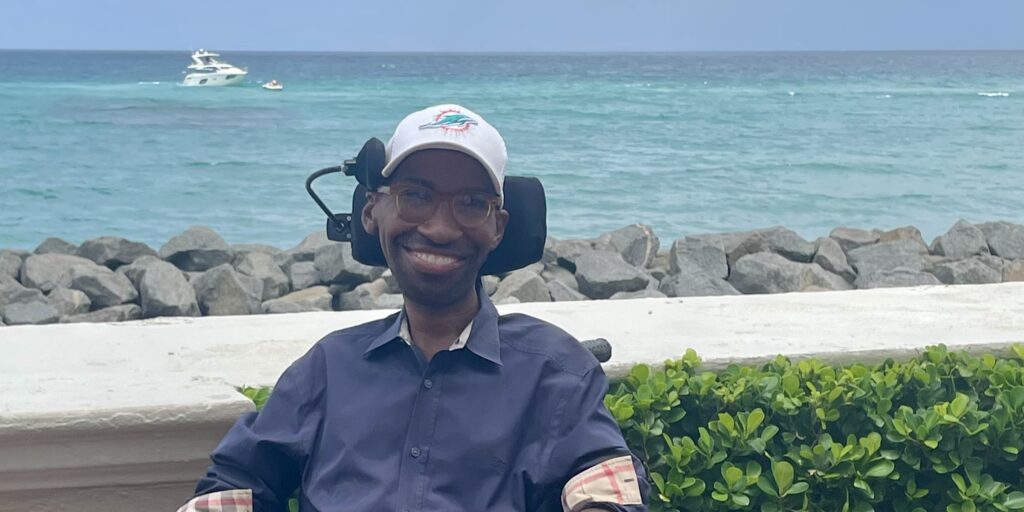
Connecting Over Diagnosis Leads to Lifelong Friendships
By Melissa Grove | Monday, February 12, 2024
For 25 years after I was diagnosed, I never met another person with limb-girdle muscular dystrophy (LGMD). I dealt with everything on my own, which was lonely and hard, but since the doctors told me there was nothing I could do about the gradual progress of my condition, I decided to build a wonderful life.
After graduate school, I backpacked around Europe for three months, and then I began what ended up being a 35-year career caring for people with HIV/AIDS. Besides running a $2.2 million healthcare nonprofit, I was also a therapist, helping people cope with their issues.
I made wonderful friends. I met an amazing man when I was 32, and we have had a spectacular 21-year marriage. He is full of love and care, doing more and more for me as my physical condition declines. But despite all the support and love in my life, I felt like something was missing.
Making connections

Melissa (right) celebrated her birthday in Las Vegas with friends Andrea (left) and Kristen (center).
In 2012, my MDA Care Center neurologist told me about the Wellstone Center Dystroglycanopathy Patient and Family Conference in Iowa because it focused on my LGMD subtype, LGMD2I/R9 (also called LGMD2I or LGMDR9). I was eager to go and hear about what was happening with research after a lifetime without treatment.
Within five minutes of walking into the conference hall, I knew I had found my people. “I’m freezing,” “I’m always cold,” “I should have brought a sweater.” These were phrases I had said hundreds of times in my life. Maybe being cold wasn’t a Melissa thing; maybe it had something to do with LGMD. I heard my life reflected in the stories of everyone there. I felt validated, heard, understood, and seen.
The science talks were over my head, but I was happy to be there among my tribe. No one had to explain themselves or feel embarrassed. We all understood. I met Kristen, who is 10 years younger than me and had just been diagnosed. We were both first-timers at the conference, but I wanted to help her because I remembered how it felt to be newly diagnosed. We exchanged phone numbers and email addresses.
Each year, I rejoined my newfound friends at the conference: in addition to Kristen, Brian, who wrote tax software for Fortune 500 companies; Andrea, an occupational therapist from Ohio; and Lacey, who founded a Facebook group for people with LGMD2I/R9. Lacey inspired me because she used her experience and energy to spread information and support all of us through the Facebook group. These were not just people with my disability but fantastic humans I loved spending time with.
I’m not alone

Melissa attended a concert with her husband Dan (left) and friends Brian (center) and Kristen (right).
C.S. Lewis said, “Friendship is born at the moment when one person says to another, ‘What! You too? I thought I was the only one.’”
There have been many of these moments at the conference, and this is a true silver lining to living with a rare disease: the opportunity to not feel alone on this journey.
To grow my friendship with Kristen, I invited her to come to Dallas. We had a blast! This was a real friendship and something that came to mean so much to me. We talk about relationships, work problems, fears and anxieties, and the myriad of things that come with a rare disease.
Kristen and I decided to visit Brian, who had been finding it difficult to travel to the conference. His prime California location made a wine trip appealing, so we rented a wheelchair-accessible van and picked him up. That was a great day! We later met up in Palm Springs, and he introduced me to Christine. She is a friend in the making. There is no end to the wonderful people I keep meeting, thanks to my disability.
When my husband and I turned 50, we celebrated in Las Vegas, and Kristen and Andrea were up there in the wraparound suite at the Cosmopolitan with me. Andrea and I ganged up on Kristen and insisted she rent a scooter because we knew navigating Vegas would be impossible without it. She reluctantly agreed and ended up overcoming her resistance to using a mobility device.
I can only imagine what people thought seeing the three of us tearing down Las Vegas Boulevard in front of the Bellagio fountains — there was no anguish, just plain fun. This memory is a silver lining.
Making more memories
Now, when I travel anywhere, I ask the Facebook group if any of them live at my destination, and I try to see them. When I was in Southern California, Tara, whom I had met at the conference, invited me to her pregnant daughter’s birthday dinner. Now, I’m a part of her family, too.
Maria, who lives in Stockholm, Sweden, reached out to me through the Facebook group, and we organized a Zoom chat. Many Zoom chats later, she visited me in Dallas for a week. We talked about our challenges and how we solve them, and the cultural differences between the US and Sweden. We were instant friends, and I will visit her in Sweden. My circle of friends keeps growing, with each person adding another layer of support, information, and camaraderie.
Our friendships aren’t just based on travel. Every day, we use Facebook Messenger to share something funny, exchange advice, crowdsource problems, and share our daily lives. When I broke my femur a few years ago, I had hundreds of people on the LGMD2I/R9 Facebook group to support me, which meant a lot.
Connection is the silver lining of living with a rare disease, and it is how we all can find meaning and joy in our journey.
Melissa Grove, 56, is a psychotherapist and public speaker living in Dallas.
Next Steps and Useful Resources
- MDA’s Peer Connections program helps folks in the MDA community connect with each other. To request a connection, contact the MDA Resource Center at 833-ASK-MDA1 or ResourceCenter@mdausa.org.
- Stay up-to-date on Quest content! Subscribe to Quest Magazine and Newsletter.
TAGS: Community, Featured Content, From Where I Sit, MDA Care Center
TYPE: Featured Article
Disclaimer: No content on this site should ever be used as a substitute for direct medical advice from your doctor or other qualified clinician.




